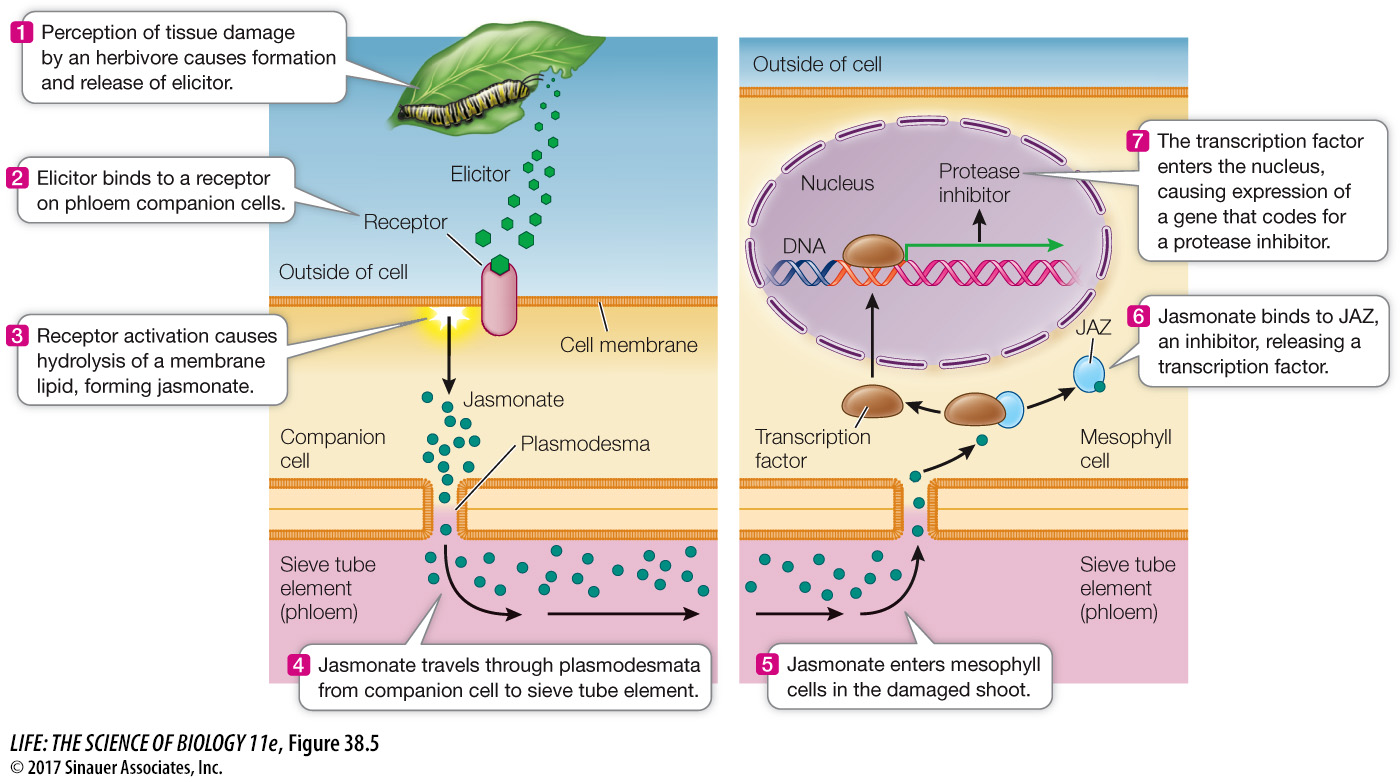Jasmonates trigger a range of responses to wounding and herbivory
When the plant senses an herbivore-

Activity 38.1 Plant Defenses Simulation
www.life11e.com/
Protease inhibitors are an important group of defensive proteins that are synthesized in response to insect attack. Once inside an insect’s gut, these inhibitors interfere with the digestion of proteins and thus stunt the insect’s growth. Jasmonates can also “call for help” by triggering the formation of volatile compounds that attract insects that prey on the herbivores attacking the plant.
Why don’t the defensive chemicals that are so toxic to herbivores and pathogens kill the plants that produce them? In some cases the defensive chemicals are directed at organs or systems that are not found in plants, such as the nervous, digestive, or endocrine systems of animals. In addition, plants that produce toxic defensive chemicals sequester them in vacuoles or store them as harmless precursors until used. Key Concept 56.2 describes these methods in more detail.